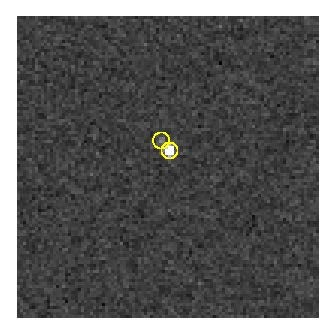The largest of Pluto’s five known moons, Charon orbits about 12,000 miles (more than 19,000 kilometers) away from Pluto itself. As seen from New Horizons, that’s only about 0.01 degree away.
“The image itself might not look very impressive to the untrained eye, but compared to the discovery images of Charon from Earth, these ‘discovery’ images from New Horizons look great!” said New Horizons Project Scientist Hal Weaver of the Johns Hopkins University Applied Physics Laboratory in Laurel, Maryland. “We’re very excited to see Pluto and Charon as separate objects for the first time from New Horizons.”
The spacecraft was still 550 million miles (885 million km) from Pluto — farther than the distance from Earth to Jupiter — when its LOng Range Reconnaissance Imager (LORRI) snapped a total of six images: three July 1 and three more July 3. LORRI’s excellent sensitivity and spatial resolution revealed Charon at exactly the predicted offset from Pluto, 35 years after the announcement of Charon’s discovery in 1978 by James Christy of the Naval Observatory.
“In addition to being a nice technical achievement, these new LORRI images of Charon and Pluto should provide some interesting science too,” said New Horizons Principal Investigator Alan Stern of the Southwest Research Institute. New Horizons is viewing Pluto and Charon at solar phase angles (the angles between the Sun, Pluto, and spacecraft) much larger than can be achieved from observatories located on or near the Earth, potentially yielding important information about the surface properties of Charon and Pluto — perhaps the existence of an overlying layer of fine particles, for example.
“We’re excited to have our first pixel on Charon,” Stern continued, “but two years from now, near closest approach, we’ll have almost a million pixels on Charon — and I expect we’ll be about a million times happier too!”










